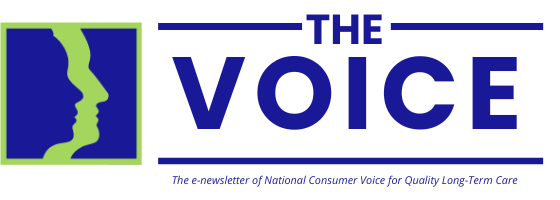|
OIG Report on First Year of COVID-19 Pandemic Dispels Myth of Inevitability of Infection, Finds Fault with Infection Surveys, and Recommends Exploring Increased Staffing
The Office of Inspector General for the U.S. Department of Health and Human Services (OIG) released a data brief last week that examined how COVID-19 affected nursing homes during the first year of the pandemic. Using a variety of data sources, the report focused on the two initial COVID-19 surges that devastated nursing home residents in 2020, first in the spring and then in the fall. During this period of time, hundreds of thousands of nursing home residents were infected with COVID-19, and tens of thousands died.
The report made several findings:
- High COVID-19 transmission in a county did not always lead to nursing homes in that county reaching extremely high infection rates.
- For-profit nursing homes made up a disproportionate percentage of nursing homes with extremely high infection rates.
- Surveyors failed to identify infection control deficiencies in the majority of nursing homes with extremely high infection rates.
- Current staffing requirements may not be sufficient to protect nursing home residents from deadly infections.
The report identified more than 1,300 homes with “extremely high infection rates” of 75% or more residents. Importantly, the report contradicts the assertion by many in the nursing home industry that nursing homes in high transmission areas could not prevent COVID-19 transmission to residents. The report found that 63% of counties with high transmission rates during the first surge did not have any nursing homes with “extremely high infection rates.” During the second surge, that number increased to 78%. According to the report, “Being located in a high-transmission county did not make it inevitable that a nursing home would have an extremely high infection rate.”
For more information, read our full summary.
|
|
CMS Announces Actions to Combat the Illegal Drugging of Nursing Home Residents
The Centers for Medicare & Medicaid Services (CMS) announced new steps to protect nursing home residents from inappropriate diagnosing of schizophrenia which often results in the improper use of antipsychotic medications to sedate and chemically restrain them. In addition, CMS announced that it would now post on Care Compare citations that are under dispute by nursing homes.
In the new guidance, CMS acknowledges that there has been a steady rise in schizophrenia diagnoses since the quality measure calculating the percentage of residents that were receiving antipsychotic medications was introduced in 2008. This announcement from CMS comes on the heels of a report from the Office of Inspector General for the U.S. Department of Health and Human Services (OIG) which found that from 2015-2019 there was a 194% increase in the number of residents diagnosed with schizophrenia who did not have that diagnosis prior to admission to the nursing home.
CMS announced that it will begin to conduct audits of nursing homes with high rates of schizophrenia diagnoses and “examine the facility’s evidence for appropriately documenting, assessing, and coding a diagnosis of schizophrenia.”
Also included in today’s announcement was a change in policy regarding the posting of violations on the Care Compare website. CMS’s policy has been that it does not post violations or citations that are in the dispute process. This process can take six months, but sometimes years, and results in consumers not being aware of deficient practices in nursing homes. CMS will now post these citations on Care Compare. Consumer Voice applauds this step as it increases transparency for consumers.
For a full summary and analysis of the CMS announcement, visit Consumer Voice's website.
|
|
Webinar on Ombudsman Program Communications and Media Relations
Join the National Long-Term Care Ombudsman Resource Center (NORC) for a webinar on Communications and Media Relations to Raise Awareness of the Long-Term Care Ombudsman Program on Tuesday, January 31 from 2:00 - 3:30 pm ET. Media experts Kristin Hyde and Katie Hewett will provide an overview of media relations, offer tips on how to respond to media inquiries to elevate the awareness of the Ombudsman program, and discuss how to successfully use social media and digital communication tools to engage targeted audiences to attract more volunteers and gain support for the program. Ombudsman program representatives are the target audience for this webinar.
Register Now
|
